Side effects of niacin flush. Niacin Flush: Understanding Side Effects, Causes, and Management
What are the side effects of niacin flush. How does niacin affect cholesterol levels. Is niacin flush harmful to your health. What causes niacin flush and how can it be managed. How does niacin compare to other cholesterol treatments.
What Is Niacin Flush and Why Does It Occur?
Niacin flush is a common side effect experienced by individuals taking high doses of niacin supplements, particularly in the form of nicotinic acid. This phenomenon occurs when blood vessels near the skin’s surface dilate, causing increased blood flow. The result is a noticeable reddening of the skin, often accompanied by a warm, itchy, or burning sensation.
The primary cause of niacin flush is the body’s reaction to high doses of niacin, typically in the range of 1,000-2,000 mg per day. This is significantly higher than the recommended daily intake of 14-16 mg for most adults. When such large amounts of niacin enter the system, they trigger a rapid expansion of capillaries, leading to the characteristic flush.
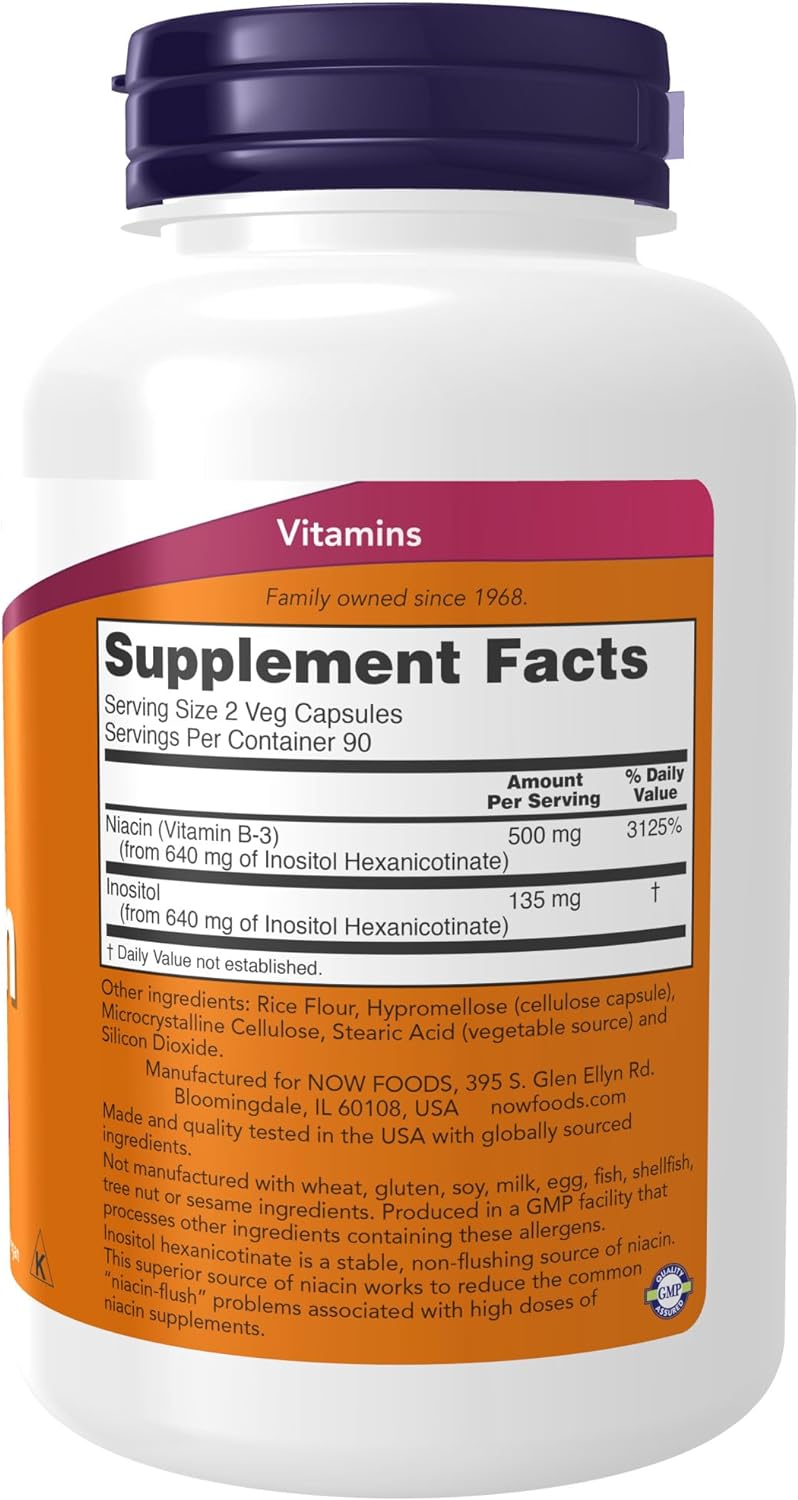
Symptoms of Niacin Flush
- Reddening of the skin (similar to a mild sunburn)
- Tingling, burning, or itching sensations
- Skin that feels warm to the touch
- Symptoms typically affect the face and upper body
- Onset usually occurs 15-30 minutes after taking niacin
- Effects generally subside within an hour
The Role of Niacin in Cholesterol Management
Despite the potential discomfort of niacin flush, high-dose niacin supplements have long been prescribed by healthcare professionals to help manage cholesterol levels and prevent heart disease. The effectiveness of niacin in improving lipid profiles is well-documented, with several significant benefits:
- Increases HDL (good) cholesterol by 20-40%
- Reduces LDL (bad) cholesterol by 5-20%
- Lowers triglycerides by 20-50%
These impressive results are achieved through niacin’s ability to influence various aspects of lipid metabolism. For instance, it prevents the breakdown of apolipoprotein A1, a crucial component in the production of HDL cholesterol. Additionally, niacin accelerates the breakdown of apolipoprotein B in LDL cholesterol, leading to reduced release from the liver.

Is Niacin Flush Harmful to Your Health?
While the symptoms of niacin flush can be uncomfortable and sometimes alarming, it’s important to understand that the flush itself is not harmful to your health. In fact, some researchers suggest that the flush may be indicative of niacin’s therapeutic effects on the body.
However, it’s crucial to distinguish between the harmless nature of niacin flush and the potential risks associated with high-dose niacin supplementation. When taken in large amounts, niacin can cause more serious side effects, including liver damage and stomach cramping. These risks underscore the importance of using niacin supplements only under medical supervision.
Potential Risks of High-Dose Niacin
- Liver damage (rare but serious)
- Gastrointestinal discomfort
- Increased blood sugar levels
- Skin rashes or allergic reactions
Managing and Reducing Niacin Flush
For those prescribed high-dose niacin supplements, there are several strategies to manage and potentially reduce the occurrence of niacin flush:

- Gradual dose escalation: Start with a lower dose and gradually increase it over time
- Taking niacin with meals: This can help slow absorption and reduce flush intensity
- Using extended-release formulations: These release niacin more slowly, potentially minimizing flush
- Avoiding triggers: Hot beverages, alcohol, and spicy foods may exacerbate flush symptoms
- Taking aspirin: Some studies suggest taking aspirin 30 minutes before niacin can help reduce flush
It’s worth noting that many individuals develop a tolerance to niacin over time, experiencing less severe or frequent flushing as their body adjusts to the supplement.
Niacin vs. Other Cholesterol-Lowering Treatments
While niacin can be effective in managing cholesterol levels, it’s typically not the first-line treatment for most patients. Statins, a class of drugs that inhibit cholesterol production in the liver, are generally preferred due to their efficacy and lower risk of side effects.
However, niacin may be prescribed in certain situations:
![]()
- When statins alone are ineffective in reaching cholesterol goals
- As a complementary treatment alongside statins
- For patients who cannot tolerate statins due to side effects
- In cases where increasing HDL cholesterol is a primary goal
The decision to use niacin should always be made in consultation with a healthcare provider, who can weigh the potential benefits against the risks and consider individual patient factors.
Different Forms of Niacin Supplements
Understanding the various forms of niacin supplements is crucial for managing side effects and optimizing therapeutic benefits. The two main forms of nicotinic acid supplements are:
- Immediate-release niacin: This form is absorbed quickly by the body and is more likely to cause flushing. However, it may be more effective in improving lipid profiles.
- Extended-release niacin: This formulation has a special coating that slows down absorption, potentially reducing the incidence of flushing. However, it may carry a higher risk of liver problems when used long-term.
It’s important to note that another form of niacin, called niacinamide, does not produce flushing. However, this form is also not effective in altering blood lipid levels, making it unsuitable for cholesterol management.
![]()
Choosing the Right Niacin Supplement
- Consider the intended use (cholesterol management vs. general health)
- Consult with a healthcare provider to determine the appropriate form and dosage
- Be aware of potential side effects and interactions with other medications
- Follow dosage instructions carefully to minimize risks
The Importance of Medical Supervision in Niacin Therapy
Given the potential for side effects and the high doses required for therapeutic benefits, niacin supplementation should always be undertaken under medical supervision. Healthcare providers play a crucial role in:
- Assessing individual patient needs and risk factors
- Determining appropriate dosage and form of niacin
- Monitoring for potential side effects and adjusting treatment as needed
- Conducting regular blood tests to evaluate liver function and lipid profiles
- Providing guidance on managing side effects like niacin flush
Regular check-ups and open communication with your healthcare provider are essential for ensuring the safe and effective use of niacin supplements.

Niacin’s Role in Overall Health Beyond Cholesterol Management
While niacin is primarily known for its cholesterol-lowering properties, it plays numerous other vital roles in maintaining overall health. As a member of the B-vitamin complex, niacin is essential for:
- Converting food into energy for the body
- Supporting proper nervous system function
- Maintaining healthy skin and mucous membranes
- Aiding in DNA repair and cellular signaling
These diverse functions underscore the importance of maintaining adequate niacin levels through a balanced diet or, when necessary, appropriate supplementation.
Natural Sources of Niacin
For those looking to increase their niacin intake without resorting to high-dose supplements, several foods are rich in this essential nutrient:
- Poultry (chicken, turkey)
- Fish (tuna, salmon)
- Peanuts and other nuts
- Legumes
- Whole grains
- Fortified cereals and breads
Incorporating these foods into a balanced diet can help ensure adequate niacin intake for general health purposes, without the risk of niacin flush or other side effects associated with high-dose supplementation.

Future Directions in Niacin Research and Therapy
As our understanding of niacin’s effects on the body continues to evolve, researchers are exploring new avenues for its therapeutic use and methods to mitigate its side effects. Some areas of ongoing research include:
- Development of novel niacin formulations with reduced flushing
- Investigation of niacin’s potential role in metabolic syndrome and diabetes management
- Exploration of niacin’s effects on inflammation and oxidative stress
- Studies on the long-term cardiovascular outcomes of niacin therapy
These research efforts may lead to improved niacin-based treatments and a broader understanding of its therapeutic potential beyond cholesterol management.
Emerging Alternatives to Niacin
As the field of lipid management continues to advance, new treatments are being developed that may offer alternatives to niacin therapy. Some promising areas include:
- PCSK9 inhibitors: A class of drugs that dramatically lower LDL cholesterol
- Bempedoic acid: A new medication that reduces cholesterol production in the liver
- Omega-3 fatty acid derivatives: Concentrated forms of fish oil that can significantly lower triglycerides
While these alternatives may not directly replace niacin in all cases, they provide additional options for patients and healthcare providers in managing complex lipid disorders.

In conclusion, niacin flush, while uncomfortable, is generally harmless and often a sign that the supplement is active in the body. However, the use of high-dose niacin supplements should always be approached with caution and under medical supervision. As research continues to uncover new aspects of niacin’s effects on the body, it remains an important tool in the management of cholesterol and overall cardiovascular health. By understanding the causes, effects, and management strategies for niacin flush, patients can make informed decisions about their treatment options in consultation with their healthcare providers.
Is Niacin Flush Harmful?
Niacin flush is a common side effect of taking high doses of supplemental niacin, which treats cholesterol problems. While harmless, its symptoms — skin that’s red, warm, and itchy — can be uncomfortable.
The symptoms of niacin flush can make people stop taking niacin (1). The good news is that you can reduce your likelihood of getting niacin flush.
This article describes what you need to know about niacin flush, including:
- what it is
- what causes it
- what you can do about it
Niacin flush is a common side effect of taking high doses of niacin supplements. It’s uncomfortable, but it’s harmless.
It appears as a flush of red on the skin, which may be accompanied by an itching or burning sensation (1).
Niacin is also known as vitamin B3. It’s part of the B complex of vitamins that play an essential role in turning food into energy for the body (2).
As a supplement, niacin is primarily used to treat high cholesterol levels. Nicotinic acid is the supplement form people usually use for this purpose.
Nicotinic acid is the supplement form people usually use for this purpose.
The other supplemental form, niacinamide, doesn’t produce flushing. However, this form isn’t effective at altering blood fats, such as cholesterol (3).
There are two main forms of nicotinic acid supplements:
- immediate release, where the whole dose is absorbed at once
- extended release, which has a special coating that makes it dissolve more slowly
Niacin flush is a very common side effect of taking the immediate-release form of nicotinic acid. It’s so common that at least half of people who take high doses of immediate-release niacin supplements experience it (4, 5).
High doses of nicotinic acid trigger a response that causes your capillaries to expand, which increases the flow of blood to the skin’s surface (1, 6, 7, 8).
By some reports, virtually every person who takes high doses of nicotinic acid experiences flush (6).
Other medications, including some antidepressants and hormone replacement therapies (HRTs), can also trigger flush (1).
SUMMARY
Niacin flush is a common reaction to high doses of niacin. It happens when capillaries expand, increasing blood flow to the skin’s surface.
When niacin flush occurs, symptoms typically set in about 15–30 minutes after taking the supplement and taper off after about an hour.
The symptoms mainly affect the face and upper body, and include (9, 10):
- Reddening of the skin. It can appear as a mild flush or be red like a sunburn.
- Tingling, burning, or itching. This can feel uncomfortable or even painful (9).
- Skin that’s warm to the touch. As is the case with sunburn, skin may feel warm or hot to the touch (11).
People generally develop a tolerance to high-dose niacin. So even if you experience niacin flush when you first start taking it, that will probably stop in time (1, 8).
SUMMARY
Niacin flush can appear and feel much like a sunburn.
However, symptoms typically go away after an hour. People usually develop a tolerance to the supplements over time.
Doctors have long prescribed high doses of niacin to help people improve their cholesterol levels and prevent heart disease (5).
Taking high doses of niacin has been shown to produce the following improvements in blood cholesterol and lipids:
- Increase HDL (good) cholesterol. It prevents the breakdown of apolipoprotein A1, which is used to make HDL (good) cholesterol. It can increase HDL (good) cholesterol by up to 20–40% (1, 12).
- Reduce LDL (bad) cholesterol. Niacin speeds the breakdown of apolipoprotein B in LDL (bad) cholesterol, causing less to be released by the liver. It can reduce LDL (bad) cholesterol by 5–20% (11, 13, 14).
- Lower triglycerides. Niacin interferes with an enzyme that’s essential for making triglycerides. It can lower triglycerides in the blood by 20–50% (3, 11).

People only experience these positive effects on blood fats when they take therapeutic doses of niacin in the range of 1,000–2,000 mg per day (5).
To put that in perspective, the recommended daily intake for most men and women is 14–16 mg per day (9, 10).
Niacin treatment isn’t typically the first line of defense against cholesterol problems, since it can cause side effects other than flush.
However, it’s often prescribed for people whose cholesterol levels don’t respond to statins, which are the preferred treatment (15).
It’s also sometimes prescribed to accompany statin therapy (16, 17, 18, 19).
Niacin supplements should be treated like a drug and only taken under medical supervision, since they can have side effects.
SUMMARY
High doses of niacin are typically used to improve cholesterol and triglyceride counts. They should only be taken under medical supervision, since they carry a risk of side effects.
Niacin flush is harmless.
However, high doses of niacin can cause other, more dangerous side effects, although these are rare (20).
The most harmful of these is liver damage. High doses of niacin may also cause stomach cramping, so don’t take them if you have a stomach ulcer or active bleeding (9, 21, 22, 23, 24).
You also shouldn’t take high doses if you’re pregnant since it’s considered a category C drug, meaning at high doses, it could cause birth defects (22).
Interestingly, although the flush isn’t harmful, people often cite it as the reason they want to discontinue their treatment (1).
And that in itself can be a problem, since if you don’t take niacin as it’s prescribed, it’s not at all effective at preventing heart disease.
According to reports, 5–20% of people who have been prescribed niacin stop using it because of flush (5).
If you’re experiencing niacin flush, or are concerned about it as a possible side effect of these supplements, tell your healthcare provider. They can help you figure out how to reduce the chances of flush or discuss alternative treatments.
They can help you figure out how to reduce the chances of flush or discuss alternative treatments.
Also, because there are other, more harmful side effects associated with taking these supplements, do not try self-medicating with niacin.
SUMMARY
Niacin flush is harmless. However, the supplements can have other harmful side effects, and certain people should not take them.
Here are the main strategies people use to prevent niacin flush:
- Try a different formula. Roughly 50% of people taking immediate-release niacin experience flushing, but extended-release niacin is less likely to cause it. And even when it does, symptoms are less severe and don’t last as long (1, 4, 11). However, extended-release forms may carry a greater risk of liver damage.
- Take aspirin. Taking 325 mg of aspirin 30 minutes before the niacin can help reduce the risk of flush. Antihistamines and nonsteroidal anti-inflammatory drugs (NSAIDs), such as ibuprofen, can also minimize the risk (5, 10, 25, 26).

- Ease into it. Some experts recommend starting with a smaller dose like 500 mg and then increasing to 1,000 mg gradually over the course of 2 months, before finally increasing to 2,000 mg. This strategy could bypass flush entirely (5).
- Have a snack. Try taking niacin with meals or with a low-fat evening snack (5).
- Eat an apple. Some early research suggests that eating an apple or applesauce prior to taking niacin may have a similar effect to aspirin. Pectin in apple seems to be responsible for the protective effect (10).
SUMMARY
Taking aspirin, eating a snack, slowly increasing the dosage, or switching formulas may help you prevent niacin flush.
As mentioned above, to avoid unwanted symptoms, including flushing, some people opt for extended-release or long-acting niacin.
However, extended-release and long-acting niacin differ from immediate-release niacin and may cause different health effects.
Long-acting niacin is associated with significantly reduced flushing, as it’s absorbed over a long time period that typically exceeds 12 hours. Because of this, taking long-acting niacin significantly reduced the chances of flushing (11).
However, because of the way the body breaks it down, taking long-acting niacin may have toxic effects on the liver, dependent on the dose taken (11).
Although uncommon, switching from an immediate-release niacin to a long-acting niacin or significantly increasing your dose can result in serious liver damage (27).
What’s more, niacin absorbability depends on the niacin supplement that you take.
For example, the body absorbs nearly 100% of nicotinic acid, which raises niacin blood levels to an optimal range in about 30 minutes.
In contrast, inositol hexanicotinate (IHN), a “no-flush” niacin, isn’t absorbed as well as nicotinic aid (28).
Its absorption rate varies widely, with an average of 70% being absorbed into the bloodstream.
Plus, IHN is significantly less effective than nicotinic acid at increasing serum niacin. IHN usually takes between 6-12 hours to raise blood levels of niacin to near the optimal range (28).
Some studies suggest that peak niacin blood levels can be over 100 times greater when supplementing with nicotinic acid compared to supplementing with IHN.
Research also shows that IHN has minimal effect on blood lipid levels (28).
Because absorbability can significantly vary depending on the form of niacin used, it’s a good idea to ask your healthcare provider what form would be best for your specific health needs.
summary
Absorbability differs between forms of niacin. Some types of niacin are more effective at raising blood levels than others.
Niacin flush can be an alarming and uncomfortable experience.
However, it’s actually a harmless side effect of high-dose niacin therapy. What’s more, it may be preventable.
That said, large doses of niacin can have other, more harmful side effects.
If you want to take high doses of niacin for health reasons, make sure to do so under medical supervision.
Why does it occur? Is it dangerous?
Niacin flush is a flushing of the skin that can occur after taking higher doses of niacin (vitamin B3) as supplements or prescription medications. A harmless and temporary side effect, it usually goes away without treatment in 1–2 hours.
People may also call niacin vitamin B3. Niacin may come in the form of nicotinic acid or nicotinamide.
In this article, we examine niacin flush and its associated symptoms. We also discuss why people may use niacin, whether it is harmful, and how to prevent niacin flush.
High doses of niacin can cause the skin to flush, and people may experience an itching or hot, prickly sensation on the skin. Although it may seem like an allergic reaction, it is not. Flushing may affect the face and upper body.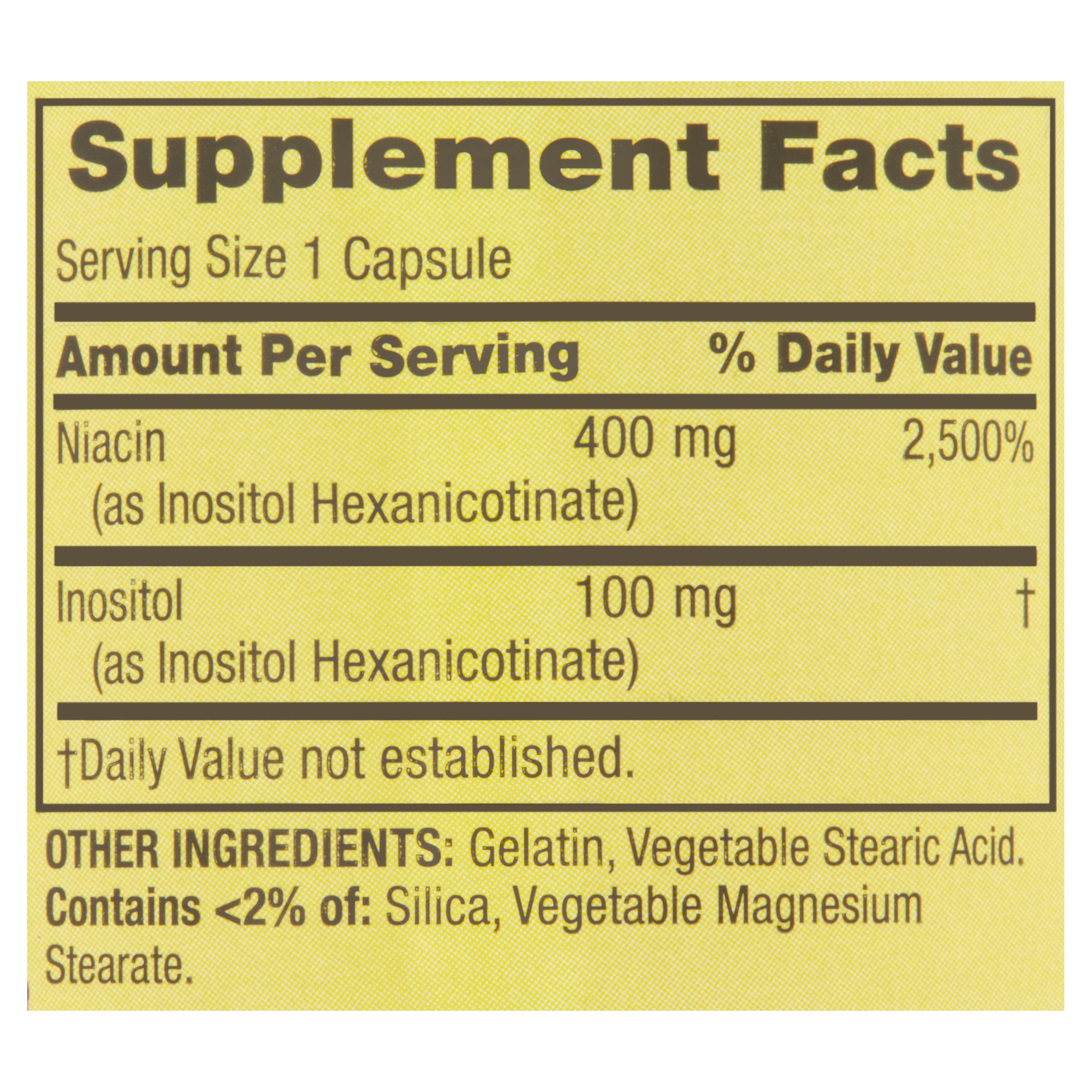
Flushing occurs from dilating blood vessels, which increases blood flow and causes the skin to redden or darken. The dilation of blood vessels may occur due to how niacin reacts with certain proteins within the skin, causing an increase in prostaglandins and the blood vessels to dilate.
Many people taking niacin may experience a niacin flush. People may experience flushing around 30 minutes after taking a high dose of niacin, such as 500 milligrams (mg) or above.
Symptoms of niacin flush may include:
- the skin on the face and upper body flushing
- itching, tingling, or prickly sensations on the skin
- a hot or burning sensation on the skin
Symptoms of niacin flush may clear within 1–2 hours of taking niacin.
People may find that symptoms of niacin flush are most intense when they first start taking high doses of niacin but may reduce with continued use.
The National Institutes of Health (NIH) recommends a daily niacin intake of 14 (milligrams) mg for adult females and 16 mg for adult males.
People may take high doses of niacin, such as 1,000 mg daily, to treat high cholesterol.
High doses of niacin may help lower the risk of heart attack and stroke in people with plaque buildup in the arteries.
High levels of niacin, as nicotinic acid, can help reduce low-density lipoprotein (LDL), or “bad” cholesterol, raise high-density lipoprotein (HDL), or “good” cholesterol, and reduce triglyceride levels.
However, high doses of niacin are unsuitable for people taking statins.
Niacin flush is harmless. It may cause discomfort, but it doesn’t damage the body. This flushing will usually go away without treatment within 1–2 hours.
As people continue to take niacin, they may find that the intensity of niacin flush reduces.
According to the NIH, niacin supplements of 30 mg or more may cause headaches, rashes, or dizziness.
Taking high doses of niacin of 1,000 mg or more without the approval of a doctor may have harmful side effects, such as:
- low blood pressure, which may increase the risk of falling
- fatigue
- high blood sugar levels
- nausea
- heartburn
- abdominal pain
- blurred vision and buildup of fluid in the eyes
Inositol nicotinate, or inositol hexanicotinate, is a combination of a form of niacin and inositol, a type of sugar that occurs in the body.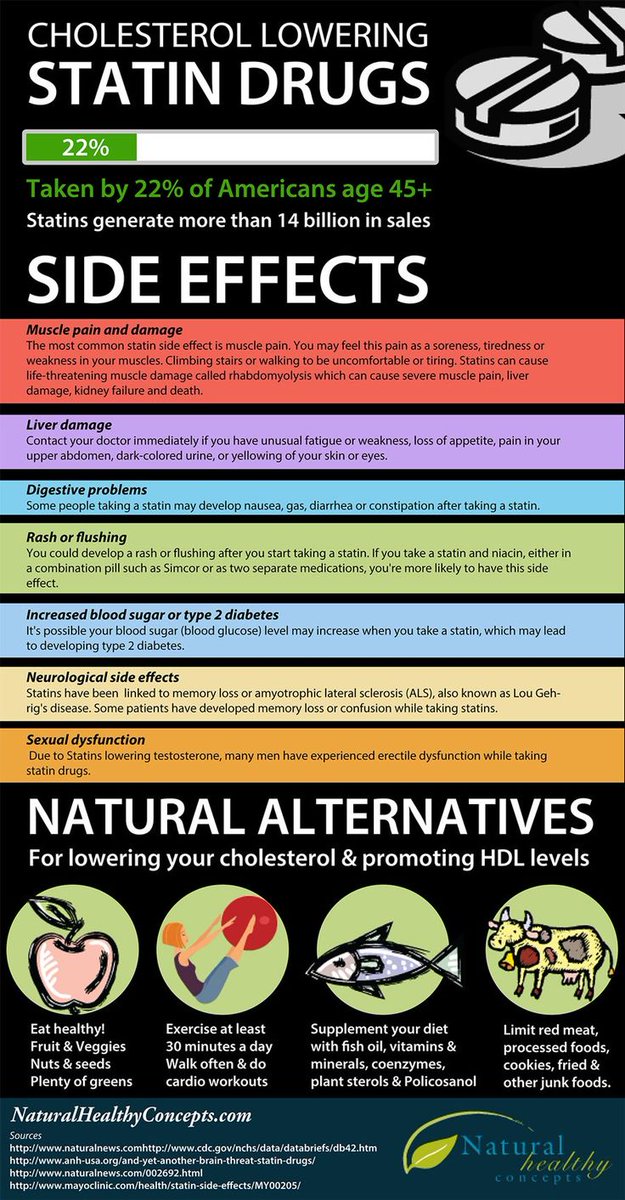
Retailers may sell inositol nicotinate as “no-flush” niacin. It may reduce flushing symptoms compared with other forms of niacin, as the body takes longer to break it down. Inositol nicotinate also lowers LDL cholesterol and triglycerides and increases HDL cholesterol.
Other sources suggest that although inositol nicotinate reduces or prevents flushing, it may not provide the body with high enough levels of niacin to lower cholesterol.
Niaspan is a prescription, slow-release form of nicotinic acid. It may reduce flushing and still provide benefits for lowering cholesterol. However, it may be more expensive than other forms of niacin.
Niaspan releases niacin more slowly but over a shorter period than other extended-release forms. This means there is less pressure on the liver to process niacin, reducing the risk of liver damage.
If people take immediate-release niacin with food, it may help decrease the intensity of niacin flush symptoms.
People may also find they can minimize flushing by starting with a lower dose of niacin and gradually working up to higher doses over the following weeks.
For example, individuals may take 100 mg of niacin twice daily with meals for the first week, then double the daily amount each week until they reach the prescribed amount. People can discuss with a healthcare professional whether this is safe for them.
According to a 2017 study, taking aspirin alongside niacin may help reduce the effects of flushing.
People can speak with a healthcare professional about the safety of taking aspirin or other medications alongside prescription niacin.
Niacin occurs naturally in many foods, including:
- poultry
- fish
- legumes
- fortified foods, such as cereals and bread
According to the NIH, niacin supplements come in two main forms: nicotinic acid and nicotinamide.
Nicotinic acid is the form of niacin that doctors prescribe to treat high cholesterol.
Extended-release nicotinic acid releases niacin more slowly into the body over an extended period. Long-term use of high niacin doses and extended-release forms of nicotinic acid may cause liver damage, including hepatitis and liver failure.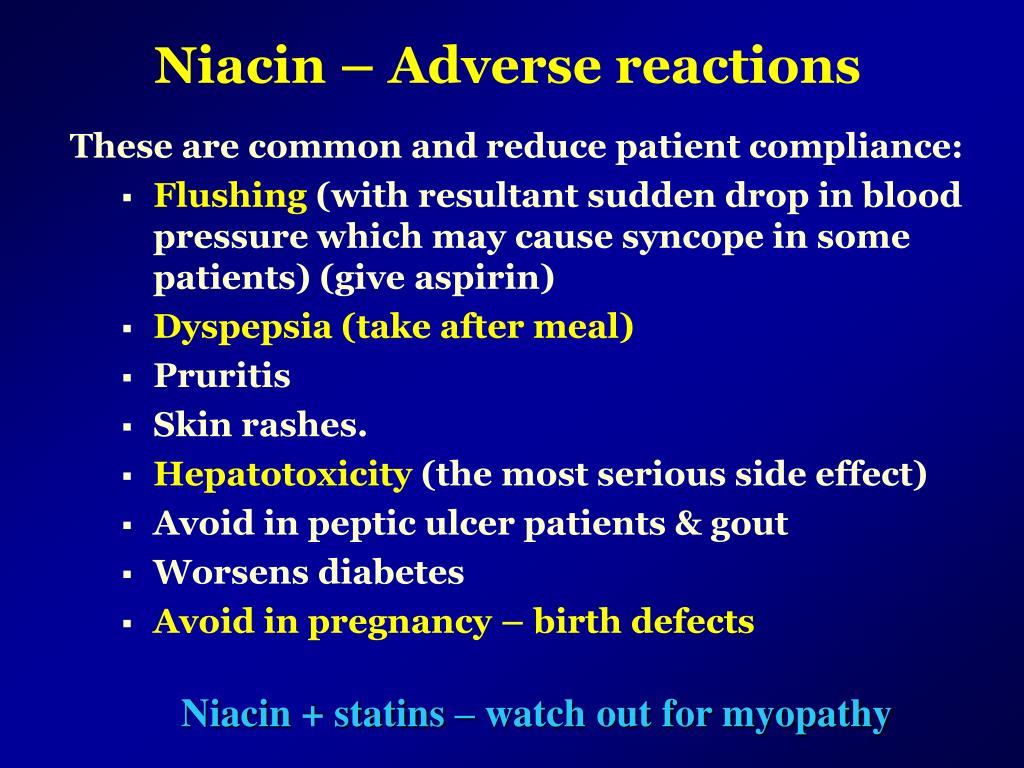
Nicotinamide may not cause as many side effects as nicotinic acid. However, doses of 500 mg or more each day may cause diarrhea, easy bruising, and increased wound bleeding.
Doses of 3,000 mg or more daily may cause nausea, vomiting, and liver damage.
Niacin flush is the skin flushing after taking high doses of niacin. Most people will experience this side effect.
People may take higher doses of prescription niacin to treat high cholesterol. Without supervision from a doctor, high doses of niacin may cause harmful side effects.
Niacin flush may also cause a tingling, pricking, or burning sensation and may affect the skin on the face and upper body. It is harmless and usually resolves without intervention within a few hours.
The intensity of niacin flush may vary with different forms of niacin. People may find that increasing dosage slowly to the prescribed amount or taking niacin with food may help reduce symptoms.
Vitamin B3: indications for use, benefits, dosage
March 25
2021
Vitamin B3 (niacin, vitamin PP) is produced in the body from tryptophan and in small quantities, so in order to maintain normal levels of this element, it is necessary to follow a diet. Vitamin B3 takes part in the breakdown and further synthesis of amino acids, carbohydrates, fatty acids, it also regulates cholesterol levels, so a deficiency of the element is dangerous for the human body. It is useful to find out what nicotinic acid is used for and what is the dosage of nicotinic acid.
Vitamin B3 takes part in the breakdown and further synthesis of amino acids, carbohydrates, fatty acids, it also regulates cholesterol levels, so a deficiency of the element is dangerous for the human body. It is useful to find out what nicotinic acid is used for and what is the dosage of nicotinic acid.
What is Vitamin B3 (Nicotinic Acid, Vitamin PP)
Niacin is considered to be a vitamin with increased stability, as it is not particularly sensitive to oxygen, heat and UV rays.
The role of vitamin B3 for the body is great. The substance is water-soluble and contributes to the correct functioning of the nervous system. Niacin is also required for the synthesis of steroid hormones (including estrogen, progesterone, testosterone, hydrocortisone), pancreatic hormones (in particular, insulin) and the thyroid gland (thyroxine).
Vitamin PP has an effect on metabolic changes that release energy. When poisoned, it slows down the toxic effect of certain chemical compounds and drugs.:max_bytes(150000):strip_icc()/inositol-what-should-i-know-about-it-89466-1a6f6de880a14d9190afa5e1b65e647c.png)
Niacin is an important component that regulates blood cholesterol levels. It also dilates blood vessels, has a positive effect on mental well-being. Niacin improves carbohydrate metabolism, increases wound healing, improves general condition, and normalizes body weight.
Sources of vitamin B3
What foods contain vitamin B3? Niacin acid is mainly found in meat, fish, grains and legumes, in milk, green leafy vegetables (among them with the highest content of lettuce, dill, parsley, sorrel, spinach), in a small percentage – in tea and coffee.
Vitamin B3 is found in lean meats: veal, turkey and chicken. You can find it in almonds, pork, dairy products, organ meats, soybeans, peas and beans. Supplements in the form of vitamin preparations can compensate for the lack of vitamin PP, such an element can be chromium, which increases the absorption of the vitamin.
Vitamin B3 is also found in foods such as yeast, wheat bran and peanuts, as well as fish, especially smoked mackerel and salmon, as a source enriched with niacin. Niacin can be present in lean protein foods, both animal and vegetable.
Niacin can be present in lean protein foods, both animal and vegetable.
Why vitamin B3 is prescribed
Niacin is prescribed:
- for diabetes and hypertension;
- for the treatment of disorders of the nervous system;
- for migraine;
- to improve digestion;
- to increase blood sugar;
- to improve metabolism;
- to increase the protective properties of the pancreas.
The main thing when niacin is prescribed is the lack of this substance in the body. More information on the site.
How to take vitamin B3
Breastfeeding women, as well as those using contraceptives, cancer patients and people who lack protein, especially need nicotinic acid.
Recommended daily value of vitamin B3:
- 6-10 – children 1-3 years old;
- 8-16 – children 4-8 years old;
- 14 – women;
- 16 – men;
- 17-18 – pregnant.

The normal dosage of niacin for each individual may vary according to age and sex.
Medical use
In the medical field, vitamin B3 is used to treat lipid and lipoprotein problems. They more often than others lead to the development of such a disease as atherosclerosis. A dosage of more than 1 gram per day is able to increase HDL cholesterol levels in the blood plasma, and at the same time to reduce cholesterol and triglyceride levels of LDL.
At higher doses (>100 mg/day), vitamin B3 intake may cause side effects:
- flushing of the skin, mainly on the face;
- fever;
- pruritus and tingling;
- gastrointestinal disturbances (nausea, gagging, gas, diarrhea and possibly worsening peptic ulcer).
Niacin increases the production of adiponectin in fat cells. It is a hormone with anti-atherosclerotic action. Based on clinical studies, niacin is known to relieve migraine symptoms.
More information here.
Contraindications for use
Main contraindications for nicotinic acid:
- hypersensitivity to the substance;
- atherosclerosis;
- hyperuricemia;
- liver failure;
- pancreatitis;
- glaucoma;
- the presence of duodenal ulcer and stomach ulcer, especially during the period of exacerbation;
- arterial hypertension;
- gout;
- arterial hypotension.
It is also important to control the level of niacin in the body. Deviations from the norm are unacceptable, namely, surpluses and deficits.
Excess niacin
Excess vitamin B3 occurs when more than 35 mg per day is consumed. This is often seen with niacin tablets.
Symptoms of vitamin B3 excess:
- skin itching, dryness and redness;
- hyperglycemia;
- liver failure;
- rash;
- abdominal pain, nausea and vomiting;
- arrhythmia.

Therefore, it is not recommended to self-administer – consult your doctor.
Vitamin B3 deficiency
Diet, isoniazid drugs, sugar and alcohol abuse cause niacin deficiency. This can lead to consequences that include a decrease in resistance to cold due to a slowdown in metabolism. Also, the result of a lack of vitamin B3 can be a serious disease – pellagra.
Possible consequences of pellagra:
- dermatitis disease;
- dementia;
- death.
Distinguish between physical and psychological symptoms of vitamin B3 deficiency.
Psychological symptoms:
- increased anxiety;
- irritability;
- delusions and hallucinations;
- amnesia;
- apathy and depression.
Physical symptoms:
- hyperpigmentation;
- skin thickening;
- inflammation in the mouth;
- indigestion.
Self-diagnosis is unacceptable. It is necessary to consult a doctor with the delivery of tests.
It is necessary to consult a doctor with the delivery of tests.
Vitamin B3 deficiency and other diseases
Initially, a small deficiency of vitamin B3 provokes a slow metabolism. This may have different consequences. One option is to lower the thermal threshold. If niacin is not enough, it causes a disease called pellagra (Lombard erythema).
Abnormal metabolism of niacin is observed in many diseases. This is mainly found in schizophrenia, hypercholesterolemia, Hodkins’ disease, and depression. A carcinoid tumor that increases the production of serotonin is also triggered by a lack of B3.
Manifestations of pellagra:
- rashes;
- diseases of the gastrointestinal tract, including diarrhea, constipation, vomiting;
- scarlet tongue;
- diseases of the nervous system – apathy, depression, inability to concentrate, headaches, memory problems.
Pellagra is a fatal disease if left untreated.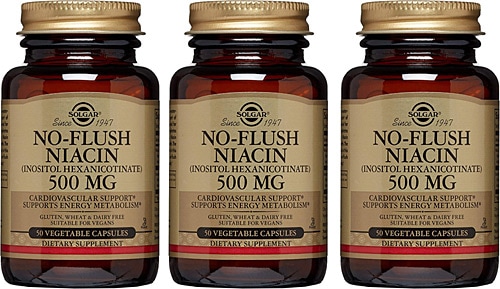 Before taking niacin, a consultation with a specialist is required. Only he can prescribe the drug, indicate the recommended dosages and duration of treatment.
Before taking niacin, a consultation with a specialist is required. Only he can prescribe the drug, indicate the recommended dosages and duration of treatment.
Remember that self-medication can make the situation worse.
Drug Comparison Chart
References
- https://pubmed.ncbi.nlm.nih.gov/30097857/902 43
- https://pubmed.ncbi.nlm.nih.gov/27457213/
- https://pubmed.ncbi.nlm.nih.gov/28983799/
- https://pubmed.ncbi.nlm.nih.gov/24993939/
Share
Share
Share
Share
New comment
Sign in with
Submit
Nicotinic acid overdose: symptoms and prevention
2 An overdose of nicotinic acid is a dangerous condition that occurs during treatment with the drug in large doses. It can be fatal, so it is important to know how to help the victim. You also need to find out how niacin works on humans.
You also need to find out how niacin works on humans.
Article content
- Information about the drug
- Description
- Field of application
- Contraindications of the drug
- Way of taking nicotinic acid
- Adverse reactions
- Causes of overdose of nicotinic acid
- Symptoms overdose with vitamin PP
- First aid and treatment of overdose
- Possible consequences
- Prevention measures
Nicotinic acid, the benefits and harms of which have long been known to scientists, is produced in tablets and ampoules for injection by a number of pharmaceutical companies, so the composition of the auxiliary components of the drug may differ.
Description
Nicotinic acid, niacin, vitamin PP or B3 is involved in the metabolism of lipids, proteins, amino acids and purines. Its deficiency causes pellagra, a disease that, if left untreated, can lead to death. Niacin is essential for tissue respiration, the breakdown of glycogen to glucose.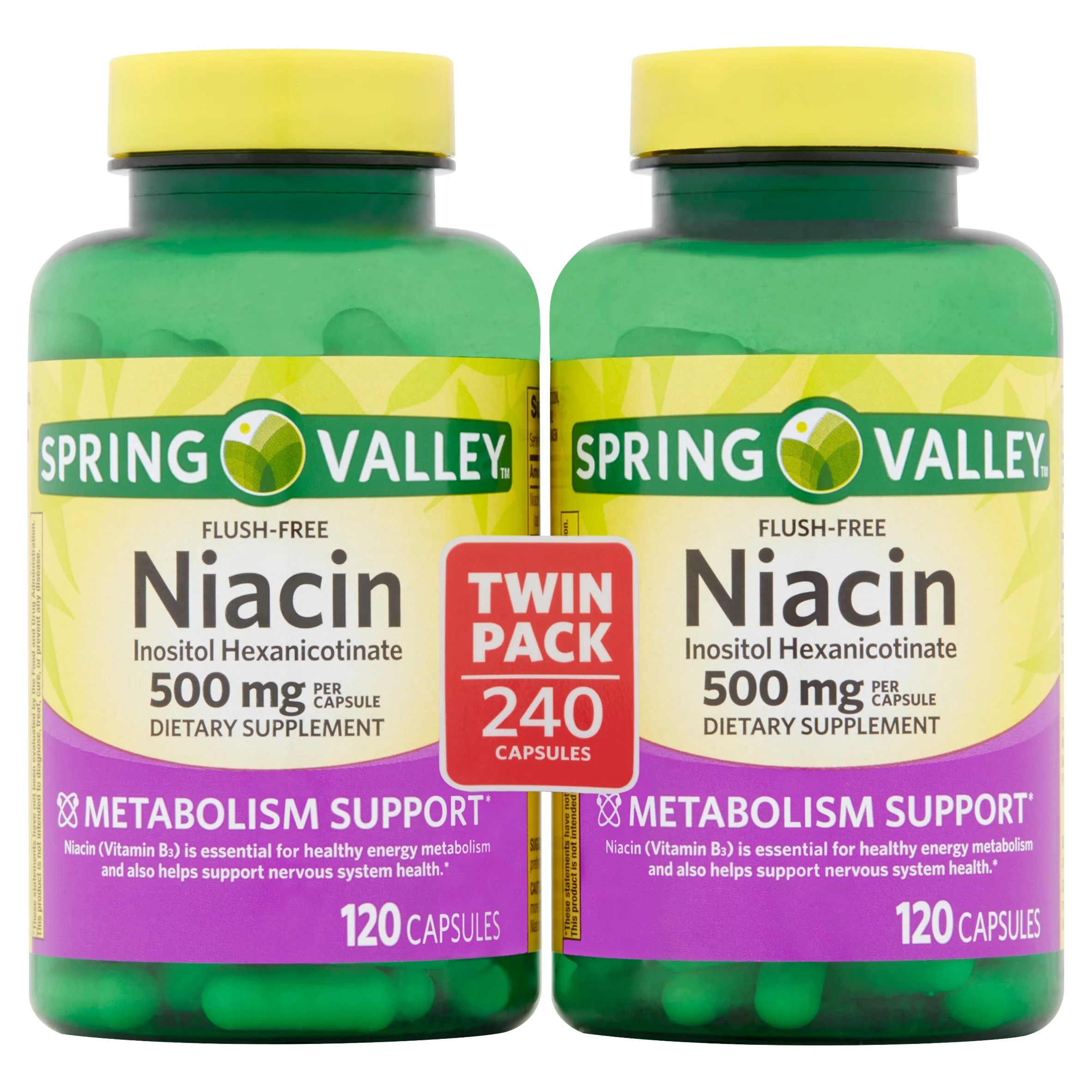 It lowers the content of “bad” cholesterol in the body and increases the level of “good”.
It lowers the content of “bad” cholesterol in the body and increases the level of “good”.
Niacin causes dilation of small vessels, improves blood circulation, has anticoagulant properties.
The benefits of nicotinic acid are as follows:
- normalizes metabolism, reduces cravings for sweets and promotes rapid weight loss;
- restores nerve fibers;
- improves circulation;
- increases the body’s resistance to infectious diseases;
- improves tissue oxygen supply;
- removes harmful substances from the body.
Vitamin PP prevents hair loss and dandruff. To do this, when washing your hair, it is recommended to add 1-2 drops of the solution to the shampoo or conditioner. You can make a mask 2-3 times a week for a month: mix 1 ml of medication with 0.5 tbsp. l. aloe juice; Apply the resulting solution to the scalp, cover with plastic wrap and a towel on top. Wash your hair with shampoo after 40 minutes.
Vitamin PP has a positive effect on the skin of the face, with its deficiency it becomes dry, rashes appear on it. To get rid of these problems, it is recommended to add 2 drops of the drug to cosmetics.
Before using vitamin PP in a hair mask or adding it to cosmetics, you need to make sure that there is no allergy. To do this, apply a small amount of the drug to the bend of the elbow and see if redness, rash, swelling of the skin appears.
Do not exceed the dose of the vitamin indicated in the prescriptions, otherwise, even with the external use of the product, an overdose may occur.
After oral administration, the drug is rapidly absorbed in the digestive tract, the highest concentration in the bloodstream is reached after 45 minutes.
Vitamin PP in the human body is deposited mainly in the liver, kidneys and adipocytes (fat cells). Passing through the liver, it undergoes metabolism. Regardless of the dosage form, nicotinic acid is completely excreted in the urine within 1. 5 hours.
5 hours.
Field of application
Oral and parenteral niacin is used in the presence of the following pathologies:
- pellagra;
- cerebral blood flow disorder caused by ischemic stroke;
- obliterating diseases of the vessels of the arms and legs, including Raynaud’s syndrome, thromboangiitis;
- hypoacid gastritis;
- long non-healing wounds and trophic ulcers;
- Bell’s palsy;
- acute and chronic inflammation of the liver;
- spasm of the vessels of the arms and legs, urinary and biliary tract;
- diabetes mellitus complicated by diabetic polyneuropathy and macroangiopathy;
- Hartnup’s disease is a genetic pathology in which there is a violation of the absorption of a number of amino acids;
- poisoning of various origins, including ethyl alcohol, drugs.
The preparation for the prevention of hypo- and avitaminosis is used in case of a poor diet, in violation of its absorption, for example, due to pancreatic dysfunction.
Contraindications of the drug
The drug can harm the body even without an overdose when used for certain diseases.
Treatment with nicotinic acid is contraindicated if:
- allergic to the composition of the drug;
- atherosclerosis;
- recurrent gastrointestinal ulcer;
- cirrhosis of the liver;
- decompensated diabetes mellitus;
- gout;
- a large amount of uric acid in the blood.
Vitamin PP is incompatible with breastfeeding, so the infant must be switched to formula during treatment, otherwise the child may overdose. Tablets are prohibited for children under 3 years of age and for women in position. Niacin injections are administered only to adults.
Niacin should be used with caution in patients suffering from the following pathologies:
- increased intraocular pressure;
- hemorrhages;
- gastritis with high acidity;
- history of peptic ulcer;
- hypotension.

Whether it is possible to give injections of vitamin B3 to pregnant women, you need to specify in the annotation, since depending on the manufacturer, the recommendations on this matter will be different. For example, a medicine manufactured by Atoll LLC can be administered during the period of gestation, while the medicine of Organika OJSC is contraindicated.
How to take nicotinic acid
Tablets should be taken after meals. Injections can be done intravenously, intramuscularly and subcutaneously. Depending on what needs to be treated, the vitamin is prescribed in different dosages, which must be strictly observed:
- For prevention, the drug is prescribed orally in a daily dose of 15-25 mg for adults, 5-20 mg for minors.
- For the treatment of pellagra in children, the drug in tablets is prescribed 50 mg twice to thrice a day, adults 100 mg three to four times a day for 15 to 20 days. In injections, the drug is administered in 1 ml (10 mg) twice or thrice a day for 10-15 days.

- In ischemic stroke, inject 1 ml slowly into a vein.
- If Hartnup’s disease is observed, “nicotine” is prescribed 40-200 mg per day.
- In case of other diseases in injections, the drug is administered 1 ml 1 or 2 times a day for 10 or 15 days. In tablets, people over 18 years of age are prescribed 50 or 100 mg 2 to 4 times a day for a month.
To avoid overdose, it must be taken into account that the highest single dose for adults should not exceed 100 mg, the daily dose should not exceed 300 mg in injections, and 500 mg in tablets.
In children, an overdose is possible if nicotinic acid is taken in a single dose of more than 50 mg, or more than 150 mg per day.
To reduce the negative effect of the vitamin on the body, the following recommendations should be followed:
- To reduce the risk of liver dysfunction during therapy, it is worth adhering to a diet with a high content of methionine. There is a lot of this substance in cottage cheese.
 You can also use lipotropic drugs, for example, methionine or lipoic acid.
You can also use lipotropic drugs, for example, methionine or lipoic acid. - During the period of treatment, especially with large doses, it is necessary to periodically do an ultrasound of the abdominal cavity and donate blood for analysis. This will allow timely detection of liver problems, which can be no less dangerous than an overdose of the drug.
- When taking the medicine by mouth, to reduce the irritating effect of niacin on the human body, you need to drink it with milk. This will protect the gastrointestinal mucosa from the harmful effects of the vitamin.
Adverse reactions
Side effects of nicotinic acid may occur even in the absence of an overdose:
- hot flashes, reddening of the skin, drop in blood pressure, collapse, cephalalgia, impaired sensitivity, dizziness;
- hepatic steatosis;
- allergy manifested by rashes, pruritus, wheezing;
- decreased tissue sensitivity to glucose;
- increased activity of liver enzymes and the level of uric acid in the body;
- general weakness, fatigue.

Tablets may cause dyspepsia. The introduction of the drug under the skin or into the muscle is accompanied by pain.
If the vitamin is injected into a vein quickly, the medicine can greatly lower blood pressure and cause dizziness.
During treatment, it is advisable to refrain from driving and activities that require a quick response.
Causes of niacin overdose
An overdose of a medicine is possible for the following reasons:
- a child found and drank the medicine;
- the dose of the drug was calculated incorrectly by the doctor or by the patient himself;
- taking medication again due to memory problems;
- erroneous use of medication due to poor vision;
- non-compliance with the doctor’s recommendations and annotations, for example, the use of large doses in order to get a faster result.
Often an overdose of vitamin PP is diagnosed in women who are trying to lose weight and drink large amounts of the drug.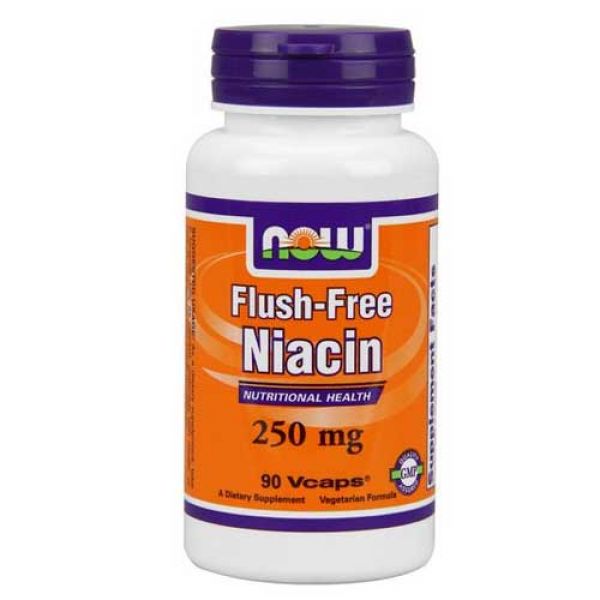
Poisoning by nicotinic acid is possible if the medicinal product has passed its expiration date or has been stored in inappropriate conditions.
In addition, an overdose of vitamin PP is possible if it is used in combination with other medicines. During treatment, the following should be considered:
- When using the vitamin in combination with drugs containing sulfonylurea, the risk of developing hyperglycemia increases.
- When treated simultaneously with Lovastatin, the likelihood of myopathy is high.
- Niacin should be used with caution in patients receiving antihypertensive and anticoagulant agents.
- Vitamin PP reduces the harmful effect of Neomycin and reduces the amount of “bad” cholesterol, which may increase due to antibiotic treatment.
Vitamin PP overdose symptoms
Nicotinic acid overdose symptoms can be as follows:
- drop in blood pressure, which can lead to dizziness, loss of consciousness, deep coma, death;
- fever, hot flashes, sensation of heat;
- nausea, vomiting, stool retention;
- dysphagia, dry mouth;
- speech disorder;
- increased sweating, mood swings, depression;
- weakening of reflexes;
- lethargy, drowsiness, indifference to what is happening.

Signs of chronic overdose due to long-term treatment with high doses of vitamin PP may be as follows:
- hepatic steatosis;
- urination (uremia) – poisoning of the body by the components of urine;
- decreased glucose tolerance;
- increased activity of liver enzymes;
- headaches;
- vertigo;
- redness of the skin;
- sensation of heat.
These symptoms do not always indicate an overdose, but in any case require specialist advice.
First aid and overdose treatment
If symptoms of an overdose appear, the drug should be discontinued. The victim must be laid on a horizontal surface so that due to a drop in blood pressure, he does not fall and is not injured.
With an overdose of vitamin PP, gastric lavage is in most cases useless, since the drug is quickly absorbed into the blood. It makes sense to induce artificial vomiting if the drug was taken in tablets no more than 30 minutes ago.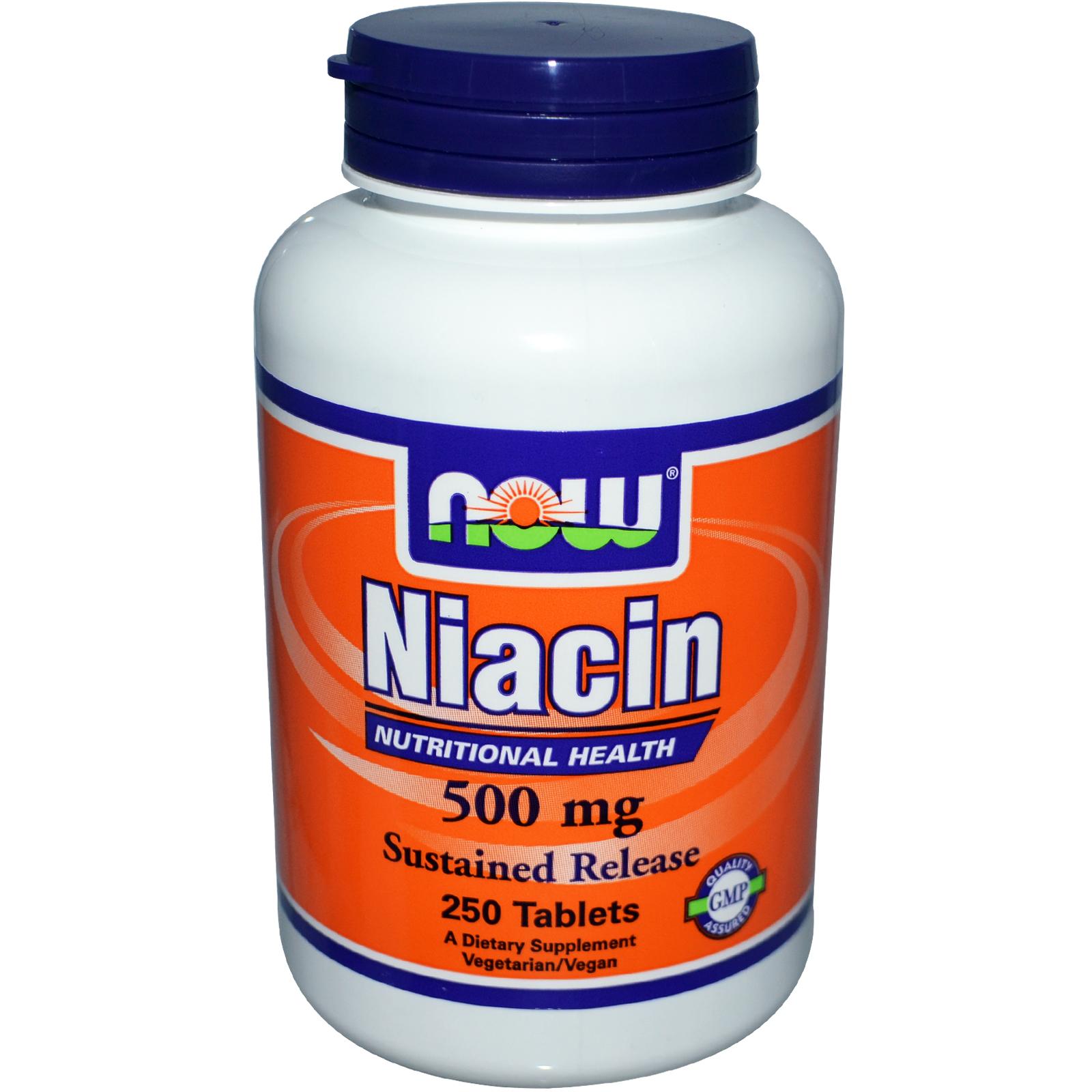 To do this, the victim is given to drink 1 liter of water and pressed on the root of the tongue. For gastric lavage in case of overdose, you can not use a solution of manganese, as it can cause a burn of the gastrointestinal tract.
To do this, the victim is given to drink 1 liter of water and pressed on the root of the tongue. For gastric lavage in case of overdose, you can not use a solution of manganese, as it can cause a burn of the gastrointestinal tract.
In case of an overdose of nicotinic acid at home, gastric lavage is not recommended for pregnant women and young children.
Immediate medical attention required.
Antidote for overdose of vitamin PP is unknown, the patient is prescribed drugs that eliminate the symptoms of intoxication.
Potential effects
In most cases, overdose of niacin is rapidly eliminated from the body, but sometimes it can cause health problems such as:
- hyperglycemic coma, which can be fatal; an overdose of vitamin PP in diabetics is especially dangerous;
- liver dysfunction;
- fall injury due to low blood pressure.
Preventive measures
To reduce the risk of an overdose of nicotinic acid, the following rules must be observed:
- keep ampoules and tablets in a place where they cannot be reached by minors and people with mental disabilities;
- before taking, carefully read the annotation and do not exceed the doses indicated in it;
- do not self-medicate, be sure to tell the doctor about all the drugs you are taking, as some of them may interact with the vitamin and cause an overdose;
- do not take the medicine if it has expired or has been stored incorrectly;
- remember that vitamin overdose is possible even with external use, so it is important to strictly follow the recipes.


 However, symptoms typically go away after an hour. People usually develop a tolerance to the supplements over time.
However, symptoms typically go away after an hour. People usually develop a tolerance to the supplements over time.





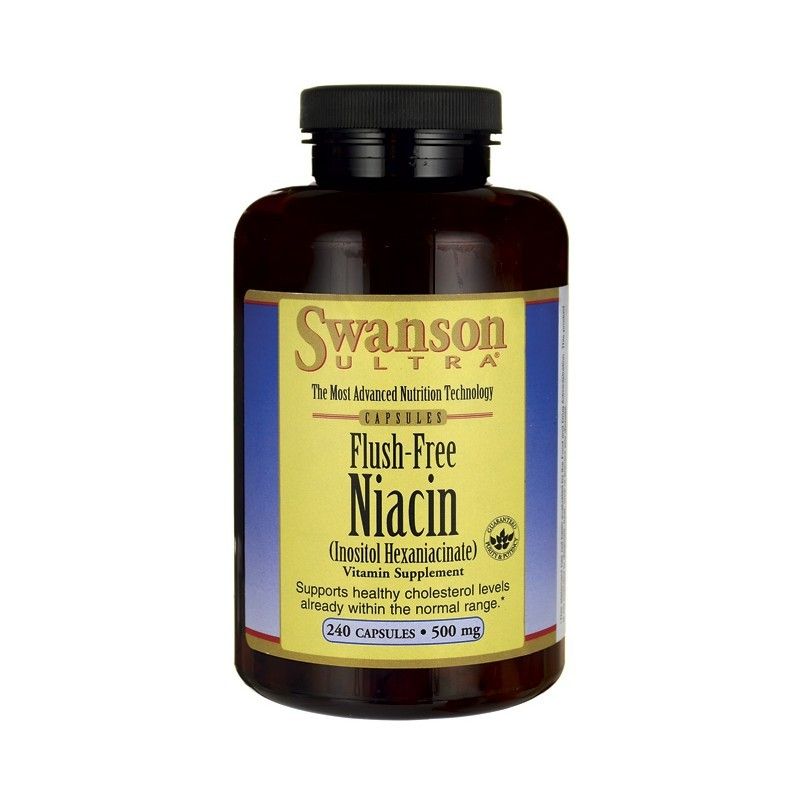 You can also use lipotropic drugs, for example, methionine or lipoic acid.
You can also use lipotropic drugs, for example, methionine or lipoic acid.

